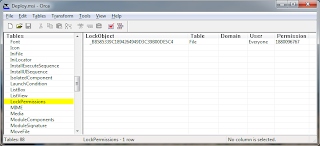I stumbled on Kriegspiel again while writing a negamax algorithm to play noughts and crosses. Debord said of Kriegspiel:
So I have studied the logic of war. Indeed I succeeded long ago in representing its essential movements on a rather simple game-board… I played this game, and in the often difficult conduct of my life drew a few lessons from it — setting rules for my life, and abiding by them. The surprises vouchsafed by this Kriegspiel of mine seem endless; I rather fear it may turn out to be the only one of my works to which people will venture to accord any value. As to whether I have made good use of its lessons, I shall leave that for others to judge. (Panegyric, 1989)

Debord need not have feared, I doubt Kriegspiel will ever be accorded much value. It's not a terrible game, but it doesn't offer all that much either.
One concept that Kriegspiel does very well is the lines of support. I've always loved how you need to keep your units supplied from the arsenal and relay units, else they become useless. That idea is evocative and well implemented.
Nevertheless, I think Heller sums up the game nicely: "Between the arithmetic and the boggling geometries, it may, in fact, be reminiscent of a certain dream you had the night before the SAT." (What is it good for? Guy Debord believed his war board game would be his legacy)
Of more interest, however, is trying to determine who Debord was by the rules he defined for Kriegspiel.
Kriegspiel is a perfect information game. In war, there are spies, scouts, propaganda, miscommunication, stealth, radar, etc. I don't see how a perfect information game captures the "essential movements" of warfare. I wonder why he chose it. Did Debord not like leaving anything to chance? Was he always completely honest (wasn't interested in hidden units/movement)?
The terrain is asymmetric, yes, but the opponents face each other as equals. For someone who lived the class war, I find it strange that Debord didn't apply the asymmetry to the players. There has probably never been a battle where opponents faced each other with equal force. Not Bored discuss this lack of asymmetry in Dispensing with Clausewitz, though I don't agree with their defence of Kriegspiel/Debord. As McHugh points out, Debord would have experienced asymmetry in '68, yet it's not there in Kriegspiel. Yes, '68 wasn't a war but it was an armed conflict and even so, there are hundreds of historical examples of asymmetrical conflicts (Battle of Thermopylae, Battle of Rorke's Drift, US vs Vietnamese, US vs Afgans, etc.)
Debord designed Kriegspiel as a zero-sum game. Zero-sum games are great but they often don't reflect the subtly of reality. They are just on/off, binary type games. Zero-sum games are not what I imagine a communist or someone who thinks dialectically would create.
Still, Kriegspiel is an interesting game. I noticed that the two computer implementations of it don't have a computer opponent. One day I might get around to writing one. I wonder what Debord would have thought when a computer plays the game better than he could ever have.











